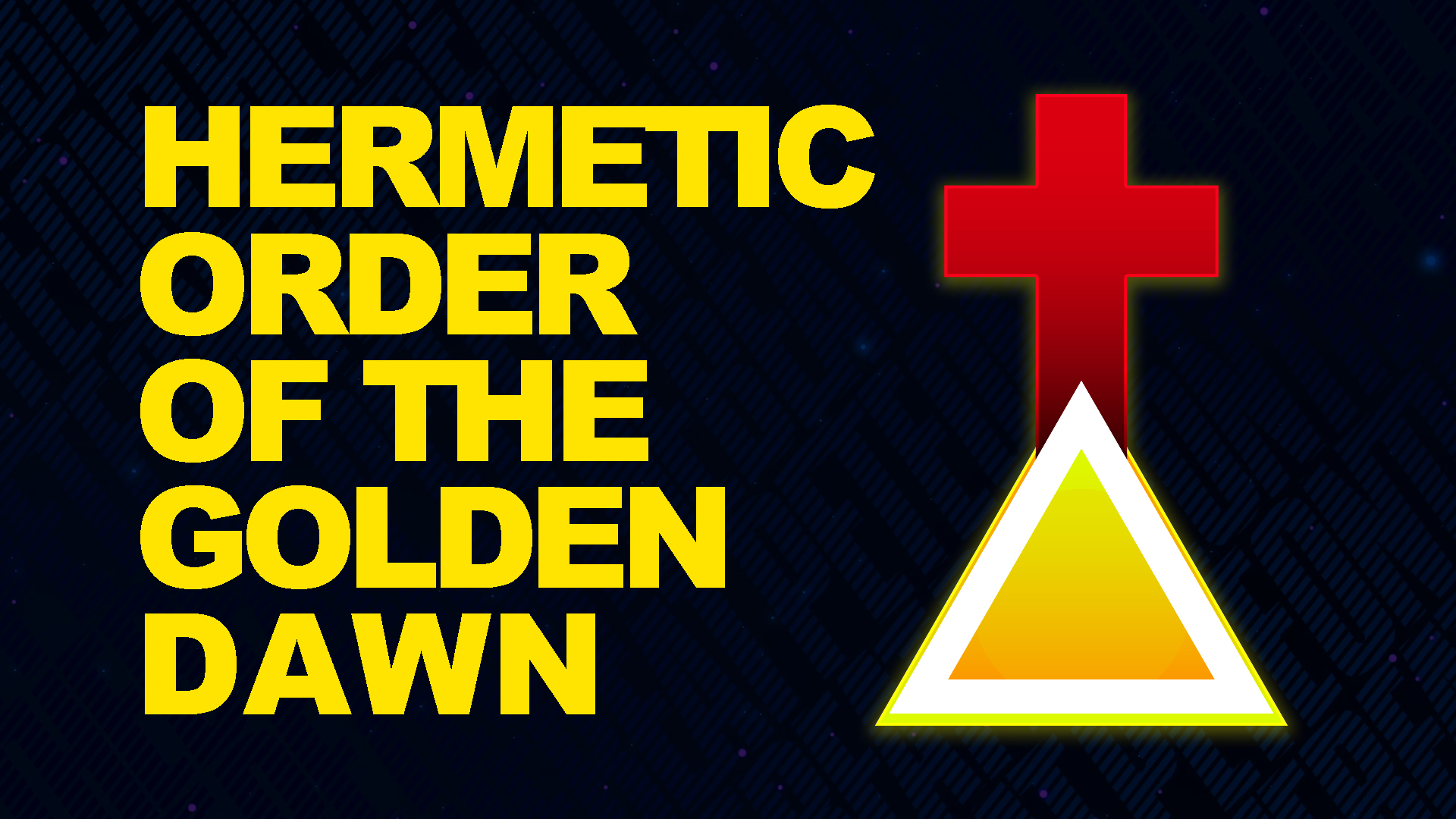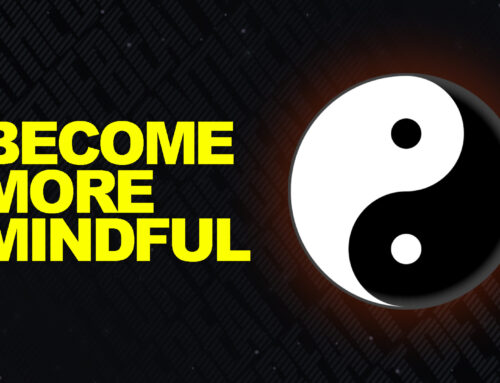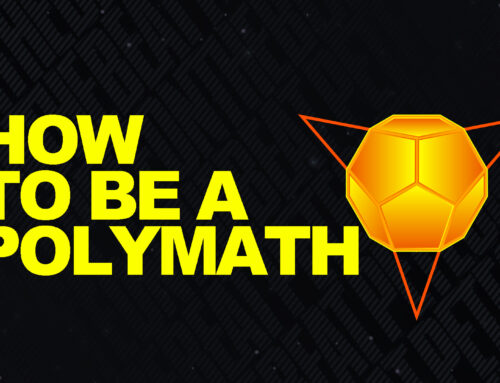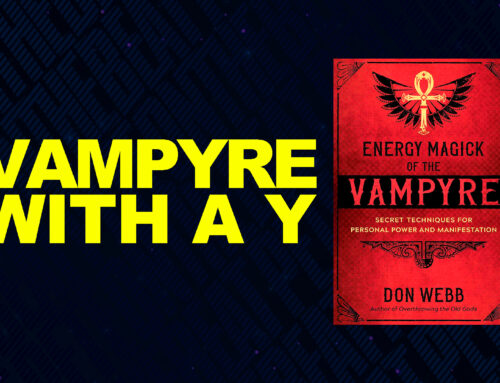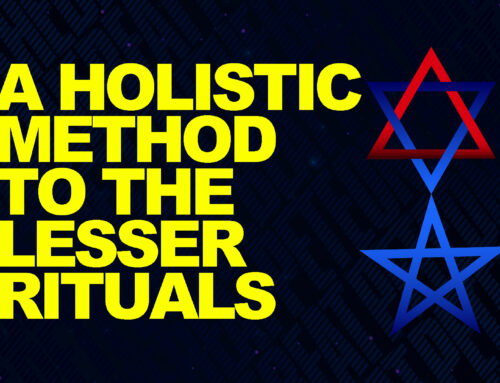Introduction
Founded in London in 1888, the Hermetic Order of the Golden Dawn entirely reshaped Western Occultism. Open to women and men, the order’s primary goal was advancing humans’ philosophical, spiritual, and psychic development. Or as said in Self-Initiation Into the Golden Dawn:
“to undertake consciously and deliberately that which was ordained as the birthright to all Humanity, TO BECOME MORE THAN HUMAN…”
Being a complex synthesis of approaches, the Golden Dawn was created by FreeMasons, Qabalists, and Rosicrucians.
Founders
Three men created the Golden Dawn system: William Wynn Wescott, Samuel Liddell MacGregor Mathers, and William Robert Woodman.
William Wynn Wescott
Being a prominent researcher, Westcott was the leading figure in founding the Golden Dawn. Heavily involved as a Freemason and Rosicrucian, he was also a Crown Coroner with a medical degree—also the founder of the Theosophical Lodge Adelphi in London. Wescott held the position of Supreme Magus in Societas Rosicruciana in Anglia (SRIA). The last is Rosicrucian society, strictly for Master Masons, the highest Masonic degree. A genuine Renaissance person, Wescott contributed to building the Golden Dawn in various ways. That included translating ancient magickal texts that eventually became the whole system’s basis.
William Robert Woodman
Highly versed in the craft of Freemasonry, Woodman contributed with a deep understanding of esotericism, mysticism, and ceremonial magic. This is important as the Golden Dawn inherited much of its structure and hierarchy from Freemasonry. Along with this, Woodman had a medical background and was quite a bit of a polymath considering his fascination with gardening. According to some sources, Woodman’s medical knowledge contributed to the emphasis on developing the aspirant’s spiritual health and well-being. Woodman held the title of Supreme Magus in SRIA. And before his death, he left a letter announcing Wescott as his successor.
Samuel Liddell MacGregor Mathers
Joining forces with Wescott, MacGregor Mathers played a crucial role as a chief adept, translator, and compiler. He was very proficient in Latin and Hebrew. And an example of his work was translating The Book of Abramelin the Mage. Arguably the most prominent grimoire on obtaining Knowledge and Conversation, the last became a central text to the Golden Dawn. Besides that, Matters was responsible for the order’s curriculum, including techniques, ceremonies, etc. As discussed later, he adapted and integrated elements from already-existing approaches. And that, according to many, is precisely what makes the system so ingenious and powerful.
Names
When founded in 1888, the Golden Dawn was initially referred to as the Esoteric Order of the Golden Dawn, Hermetic Students of the Golden Dawn, and Hermetic Society of the Golden Dawn. It is said that Israel Regardie’s publications on the Tree of Life, such as the order’s teachings and practices, popularized the HOGD name. On the contrary, there are now active temples using the older ones. An example is the Arakis Temple in Ireland called the Hermetic Society of the Golden Dawn.
Original Members
Some of Golden Dawn’s original members included: Florence Farr, Aleister Crowley, Arthur Machen, Evelyn Underhill, Arthur Waite, Moina Mathers, William Buttler Yeats, and others. The Alpha and Omega also had Dion Fortune and her teacher Maiya Curtis-Webb. Later the order and his practices (also) fascinated rock stars like Jimmy Page.
School, not Religion
Though using religious concepts and imagery, the Golden Dawn system is not a religion. Instead, these are metaphors and symbols for characteristics and forces in one’s life. Golden Dawn orders function like schools. In such schools, students master different occult sciences, Western philosophy, Alchemy, and other forms of magick.
Studying the Golden Dawn. Theory
Studying the Golden Dawn has two main aspects. The first is memorizing and grasping the language of magick, Being the one the subconscious understands, that’s symbolism and correspondence(s). Namely, how they attribute to the Qabalistic Tree of Life, the central schema of the Golden Dawn, and the whole Western Tradition.
Hermetic Qabalah
Dion Fortune (an original Golden Dawner and one of the most influential magicians) views the Tree of Life as the best symbol to meditate on. The reason is that the same is the backbone of most Western Magick, conveying the ageless wisdom of the West. Apperently, the Golden Dawn system is the epitome of that. Besides displaying how the universe manifests, the Tree of Life is also a diagram of the Human Being and GOD. It is a map of the human soul that reflects the divine.
Note: There’s an argument that there’s another fountainhead in the face of Nordic traditions.
Paths and Sephiroth
Generally, the sephiroth are states of consciousness ruling specific forces within and around you. The paths are transitions from one to another. Also, generally, the sephiroth are mystical, whereas the paths are practical. The paths also attribute to the Letters of the Hebrew Alphabet, the Zodiac Signs, the planets of the ancients, and 22 Tarot Major Arcana.
Tarot
Speaking of that, within the Golden Dawn system, the Tarot becomes much more active as it’s used for pathworking, obtaining information, consecration, and engaging in ritual work. The Tarot also follows the formula of the four Qabalistic Worlds and YHVH, the ineffable name of GOD. Going top to bottom, this is the formula of all practical magick, as discussed in my Mystical Qabalah book review. Traditionally, Golden Dawn practitioners use the Golden Dawn deck. On the other hand, Sandra Tabatha and Chic Cicero also recognize the BOTA and Thoth decks as suitable. For those wanting the best books on the sephiroth, paths, and all correspondences, I suggest Mystical Qabalah, Garden of Pomegranates, and 777. If these are inscrutable, check the books of Lon Milo Duquette.
Studying the Golden Dawn. Practice
The second and more critical part of studying the Golden Dawn is utilizing the theory and correspondences in different workings and rites. Like everything worth doing, the GD system demands practicing with consistency. This increases the ability to induce various spiritual and mystical experiences while gradually achieving illumination of how the theory applies and can be utilized in one’s life. It also lets one progress through the grades. And most importantly, it teaches them to invoke, tolerate, and direct a magickal force(s).
Grades and Sephiroth
Besides its operations, the Golden Dawn bases its grades on the Tree of Life. Meaning each corresponds to a sephira. The Tree of Life, as my viewers know, has its roots in the Heavens. The student walks the path of return, or the way of remembering, getting in touch with higher, more ethereal realms of existence. And this journey has three central stages: Inner and Outer Order and Secret Chiefs.
After transitioning from Neophyte (0=0) to Zealator (1=10), the aspirant ascends on the Tree Diagram. The first number represents the stage of development. The second is the actual Sephirah. In the case of 1=10, that’s like being a first grader and the lowest Sephirah Malkuth.
Outer Order
The Golden Dawn was an outer order of the inner order Rosae Rubeae et Aureae Crucis. It encompassed the so-called elemental grades (1=10) Zealator, (2=9) Theoricus, (3=8) Practicus, and (4=7) Philosophus. Also referred to as the Outer Order grades, these correspond to the four elements. The idea is to balance each in one’s psyche and life. So they can become suitable for working with more subtle and powerful currents. Each of these grades is associated with peculiar changes and ordeals. During each, the student constructs the appropriate magickal weapon (pentacle, dagger, cup, and wand,) studies knowledge lecture, and actively invokes the force in a maximally sterile environment. They are also exposed to one of the Elemental Tablets. But more on that later.
Elemental Grades
1=10 relates to Earth and thus everything material. Going through it may result in a ‘situation’ where not taking care of your health, physical appearance, and financial stability is no longer an option. The 2=9 lets usually-suppressed magickal power start flowing. Yet it can (also) make one aggressive, overacting, as it triggers specific aspects of the animal soul (Nephesh). The 3=8 can alter relationships and communication, although that’s the sphere of Hod and the intellect. The GD scholar Nick Farrel explains this with the degree emphasizing the Watery side. The 4=7 can bring repressed anger, such as a radical change in one’s direction and approach to magick and life.
Inner Order
After the elemental grades, the aspirant reaches Tiphereth and 5=6. This unites the supposedly balanced human being with their Holy Guardian angel. It is also when the magician is accepted in the inner order. Being 5=6, the magician is considered to have accomplished the Great Work, as the subject and object of desire are now one. Based on my research, Regardie believed there was no use in getting beyond that stage. Donald Michael Kraig and the contemporary Damien Echols share this opinion.
Secret Chiefs
The highest in the Golden Dawn hierarchy are the secret chiefs. Usually no longer alive, it is said that these entities reached the grades of the Supernal Triad, particularly Chokmah, and Kether. The Secret Chiefs act on the material world without physical form through the higher adepts. And they are also the only ones they communicate with.
Types of Magick and the Golden Dawn
Generally, all Magick can be classified under two types. Called thaumaturgy, or miracle-working, the first is usually done in the service of others. This includes lifting curses, divinations, healings, etc. Often, thaumaturgy is performed by clerics and others. It is also referred to as Low Magick.
In contrast, Theurgy, divine action, or god-working is focused on one’s own advancement. The word Theurgy was used by second-century Platonists to define the transformative power of various techniques. Also regarded as High Magick, the Golden Dawn system falls into the category of Theurgy. Hence GD practitioners are theurgists. And according to Iamblichus, practicing Theurgy is the way to assist and liberate your soul, reaching the highest divinity.
Golden Dawn Magick
Like science exploring different fields, Golden Dawn Magick explores the relationship between humanity and divinity. Its ultimate goal is to bring the true inner self hidden underneath false notions and programming. As written in Golden Dawn Magic:
“In truth, magic is a spiritual science. At its core, Golden Dawn magic explores the fundamental working relationship between humanity and divinity. It expresses fundamental knowledge of the true human self that lies beneath the illusion of the outer secular human. That inner self that is inextricably linked with the Sacred Source of Ultimate Unity…”
For those searching for commonalities between systems, I offer to explore the 4th Way concept of “Essence” and “personality.” such as Michael Aquino and Don Webb’s interpretations of it.
Method and Techniques
As mentioned, the Golden Dawn uses different approaches, only some of which are original. Instead, its power comes from successfully incorporating existing traditions and techniques and mapping them to the Tree of Life. Golden Dawn Magick employs its remarkable pentagram formula to work with Elemental and Zodiacal influences. For planetary forces, it uses its Lesser and Supreme Hexagram rituals.
Golden Dawn Earth hexagrams start at the planet’s point and go clockwise to invoke and counterclockwise to banish. The planetary elemental hexagrams begin their first triangle at the angle attributed to the planet and proceed with the second, commencing at the complementary or opposite point of the same planet. They also invoke by going clockwise and banishing by moving counterclockwise.
To learn about the difference between lesser and greater or supreme rituals, check my videos and cheat sheet on the fields of operation.
Magickal Circle
The Golden Dawn utilizes the ‘winds’ and the ‘zodiac’ models for its pentagram and hexagram formulas. The first places Air in the East, Fire in the South, Water in the West, and Earth in the North. The second puts Fire in the East, Earth in the South, Air in the West, and Water in the North. According to the Golden Dawn, this makes the elements vibrate between their position in the physical and astral and subjective and objective. It also forms some of an infinity shape in the circle.
The Signature GD Technique
If you search the internet, you’ll find that the Banishing form of the Lesser Pentagram is (considered) the most signature GD technique, with the Middle Pillar and the Rose Cross as second and third. Golden Dawn magick is a unique fusion of approaches. If it was a human, it would have been a mighty polymath. IMHO, this is best expressed in the Supreme Invoking Pentagram Ritual. Serving as the basis for Regardie’s Watchtower, SIRP was used for all operations of the Golden Dawn. Besides zodiac signs and Egyptian god forms, SIRP incorporates (both) Hebrew and Enochian names, which (based on my experience) turns into something completely different. Part of my hypothesis is that it not only touches the worlds of Briah but also more directly impacts the world of action and your psyche. Although, the Ciceros say it works mainly on the worlds of ideas and formation.
I’d also say SIRP is crucial for solo practitioners, not just because it will introduce them to the elements but because it can show them tangibly what to expect from Magick. Let me know if you agree. To learn how to perform SIRP, I suggest my content and dedicated cheat sheet.
Criticism
There are several main criticisms of the GD system. The first comes from Israel Regardie, who made conveying the system to future generations his mission. As evident in his One Year Manual, Regardie believed the elemental grades are a cookie-cutter approach unsuitable for everyone.
Being versed in psychology, Regardie knew each individual has different deficiencies, disbalances, and problems. So each journey is unique, and everyone deserves a more individualized approach. Just like traditional school is not for everyone. Regardie also invented his Watchtower ritual to produce results similar to going through the elemental grades. Working with all tablets, OBW brings the four forces in balance.
AA and the Angel
Perhaps Crowley viewed things similarly as he rearranged the entire first order when creating AA. So the student works with elements and planets much earlier. Traditionally, the GD considers there’s no contact with the Angel before 5=6. Yet, Crowley reveals that’s not the case. And in fact, (often) people of art communicate with theirs through their work.
The Winds Model
Another criticism of the GD is regarding the positioning, especially the winds model. Dealing with a pentagram that is supposed to express how the individual perceives the elements, which is subjective. One arrangement is swapping the places of Fire and Air. According to some, this must also be applied to the hexagrams. And a similar adjustment is advocated by James Eshelman and David Shoemaker but regarding the winds model. For more, check Living Thelema, Pearls of Wisdom, and Jeff Rhoades Hermetic Qabalah.
Secret Chiefs
As found in Mark Stavish’s Egregores, it is not excluded for high adepts to speculate with the concept of secret chiefs controlling and dominating people in a way similar to those of the worst sects.
Enochian
Also, widespread criticism comes from Dee purists. Namely, the Enochian material doesn’t match John Dee’s original attributions and needs to be completed. The placement of the tablets isn’t correct, the pronunciation of the language is made unnecessarily more sophisticated, and the flashing colors weren’t used by Dee. In defense, some scholars explain that it is different, not incorrect. Others add that the colors help exert more power.
Old Aeon
This refers to people claiming GD rituals are old Aeon technology for ‘occultniks.’ Despite my interest in LHP philosophy, I suggest such people do the different forms of SIRP for extended periods without banishing. Also, to test things first-hand and see how identical SIRP and OBW are to the Thelemic GIRP and the Wiccan OBW.
Influence and Legacy
Still, the Golden Dawn remains the system most impacting Occulture. It is virtually impossible to find an organization or practitioners in both US and Europe that don’t employ GD techniques. Original and modified versions of its exercises are adopted by traditional practitioners, New Agers, Chaos Magicians, and (even) LHP followers. Some examples include the works of Donald Tyson’s portable Magick, such as J. Alan Moore’s synthesis between the Watchtower and the Supreme Pentagram Rituals. Yet the most evident example is Donald Michael Kraig’s best-selling Modern Magick, which, although quite eclectic, is heavily GD based and was even adopted by certain lodges. Whether you agree with everything written in it, Modern Magick is the most-selling occult book on Amazon, rivaling Regardie’s The Golden Dawn.
Modern Systems and Modifications
Also, Wicca and Thelema. Except for Crowley’s inventions, these systems are mainly simplified GD techniques. Another example is the Middle Pillar, utilized as an effective tool for combating anxiety; Also, as a replacement for the traditional vortex for charging objects.
IMO, the term old Aeon technology has mostly to do with a dogmatic and rigid state of mind and not a technique. It is your responsibility to get the best results out of a system, even if that means tweaking it. As the Ciceros say, there’s no one ‘true way.’ And as Donald Michael Kraig suggests (paraphrasing), approach the system and rituals generally as a chaos magician. Plus, the GD techniques have so much to offer. If you can’t get probability shifts, then (probably) it’s you, not the system.
As evident on the internet, the GD remains the most influential system. Based on my observation, the interest in it only grows. And I think that’s for a good reason. But that’s just my opinion. Let me know what yours is, such as your thoughts on the GD system.
- The Power of Mindfulness Meditation - May 1, 2024
- An Autobiography of Trauma Book Review - April 23, 2024
- Reflections on Being a Polymath - April 12, 2024


